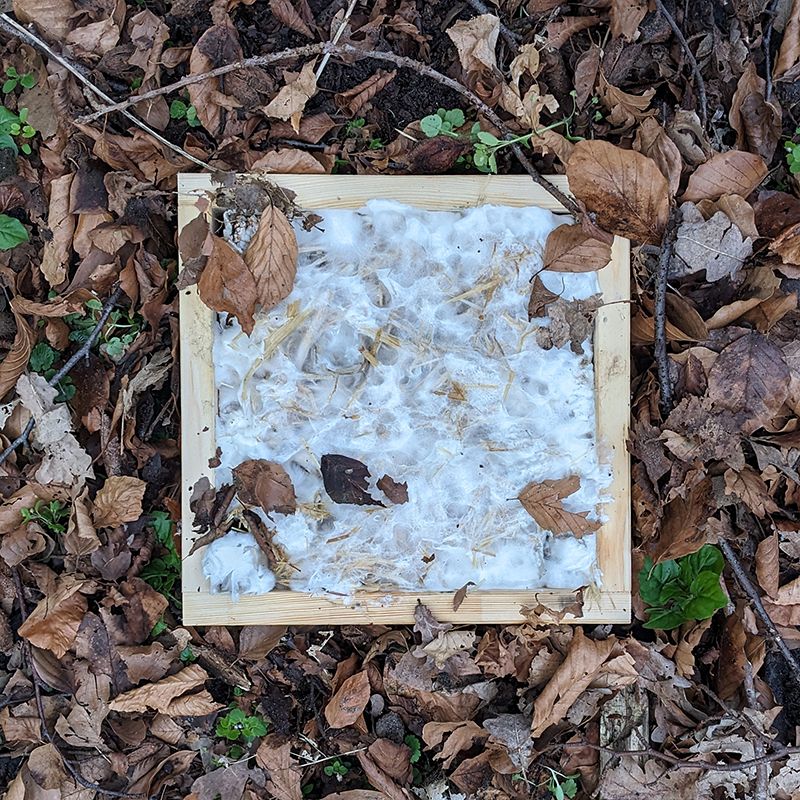
Timo Bega
Keywords: Permaculture, Mycelium, Material culture
Moulds in Soil is a radical re-imagination of industrial mycelium production, re-considering the relationships between fungi, humans, and their shared space: the forest. Through a learning-by-doing approach, I envision a regenerative mycelium practice that integrates and interacts with nature rather than exploiting it.
The installation displays mould prototypes and material samples showing the growth of mycelium materials using a self-developed, holistic, integrated? approach within living soil. By handcrafting moulds that only use natural materials, I distance myself from the industry's reliance on petrochemical, plastic-based moulds. The current established mycelium industry positions themselves as impactless, however they fail to take into account that their standardised systems require high- impact materials and resources to produce. Future material culture will not be about integrating more technological means as a way to address impact, it will be about how to use the technology and resources we have available in a more meaningful manner.
My research into producing mycelium materials within living soil started in the Haagse Bos. Over the year’s four seasons, I experimented with capturing, combining, cultivating, and collecting fungal mycelium materials grown and nurtured by forest soil. I want to address the urgent need for material production practices to reconsider their perpetual pursuit of efficiency in the face of environmental degradation and resource exhaustion.
This technique is positioned as an alternative to conventional industrial protocols, which require sterile, artificially created environments. Ironically, the industry wastefully uses electricity to mimic conditions close to those of living soil.
By leveraging mycelium's natural role in the forest, the surrounding environment is being restored. My planned interventions encourage nutrient exchange between living soil and the plants which encircle placed moulds. Fungus gives me the agency to create materiality and positive impact, combined into a single action. Threads of fungal mycelium intertwine with scattered natural byproducts like straws, fallen leaves, or sawdust, slowly forging them into tangible objects while nutrients seep into the soil as raindrops fall. By leaving a footprint of fungal spores and through the release of nutrients into the soil, the project creates a give and take between myself and the forest.
Is the goal of a circular economy enough in a world already in a downhill motion? Or do we, as descendants of industrialisation, have the responsibility of restoring the parasitic damage of it?
By looking through the fungal lens, I challenge our industrial legacy of exploitative production practices, proposing a model centred around the idea of giving back to nature before taking from it. I seek to address climate breakdown caused by mechanised production by reimagining ways of creating matter through purposeful interventions into nature’s cycles, reconsidering what my impact on our planet. If the 20th century was the age of the machine, will the 21st century be the age of life, where industry re-harmonises its way of creating with nature’s cycles?